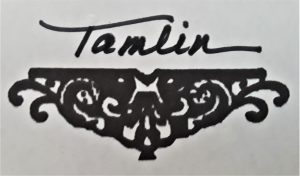…at the Eastern Shore Art Center.
It has been a busy summer already.
I just completed two weeks teaching 12 to 14 year old students (then 8 to 11 year olds) about the Choctaw indians who lived on the shores of Mobile Bay from the mid 15oo’s to 1886 when they were forced to leave on the “Trail of Tears” to Oklahoma.
1.) We started by making rainsticks:
The American Indians not only prayed for rain to feed their crops, they made instruments to dance & celebrate the rain that was coming… in advance.
Every student’s instrument had a different sound depending on what they filled them with (rice, peas, beans, etc.)

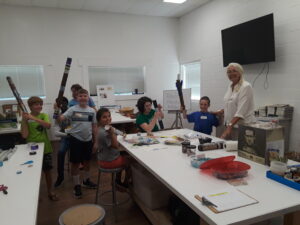
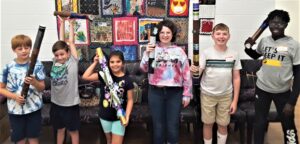
2.) Then we PRINTED FISH on canvas bags:
It is said that the Choctaw women farmed and the men fished.
So, my students printed fish on canvas bags in their honor.
They had a choice of printing a real fish or selecting a rubber fish with all the textures of a real fish.
The students below chose the REAL FISH.

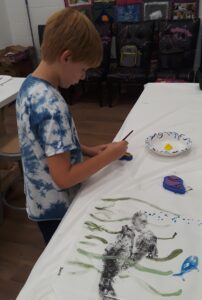
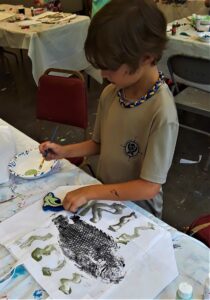
3.) Then we learned how to make a portrait.
Facial proportion and skin colors of American Indians: (all different, no 2 alike, just like us!!!)
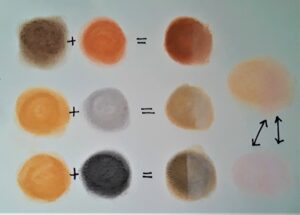
First we made our skin color, then…
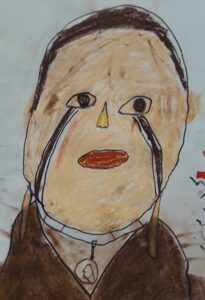


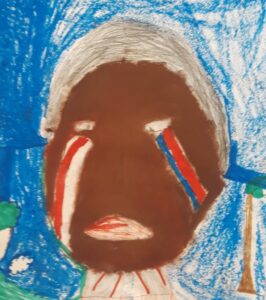
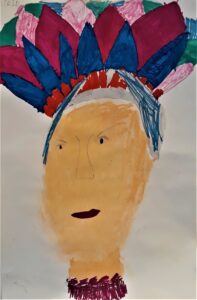
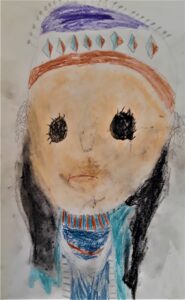
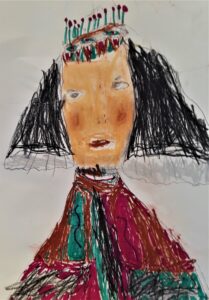
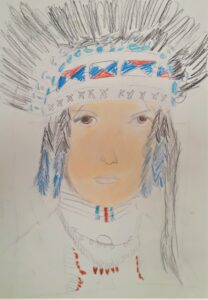
I am blown away with the porportion of the facial features and skin tones of such a young audience. These are 8 to 14 year old students.
4.) Then we focused on how oyster shells served as tools, spoons, bowls, etc…
So, we made a shell collage celebrating the use of organic objects to fill the American Indian’s needs.
We used apoxy to secure the organic items they chose. (bark, shells, moss, feathers, leaves, etc.)

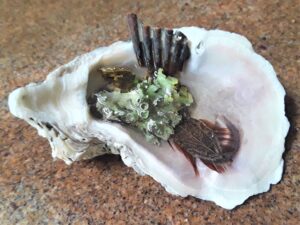
5.) Finally, we discussed how all tribes, Choctaw included, use CEREMONY to celebrate EVERYTHING:
(Rain & good crops, new births, family, death, nature, healing, etc.) In their ceremonies they dressed with nature’s magnificance.
Our last project, we honored the American Indian tradition of FEATHERS and BEADS.
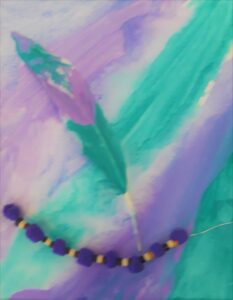



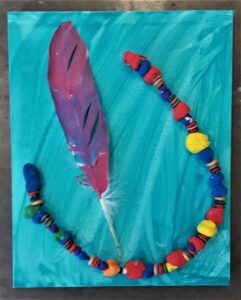
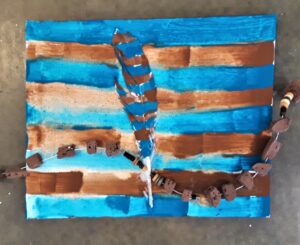
Final thoughts:
It is my hope that my students can acually FEEL how it would be to walk in the shoes (moccasins) of their Choctaw ancestors.
That they would understand an organic lifestyle, living off the land, without any technology…celebraing and honoring nature and it’s goodness.
It is imparitive that we feel the ones that were here before us to carry on their legacy.
PS. I am thrilled to teach at the Eastern Shore Art Center (EASC) in Fairhope, AL.
It is a home for creativity, diversity and hope for the future of our next generation… through the POWER of ART.
Stay tuned.
